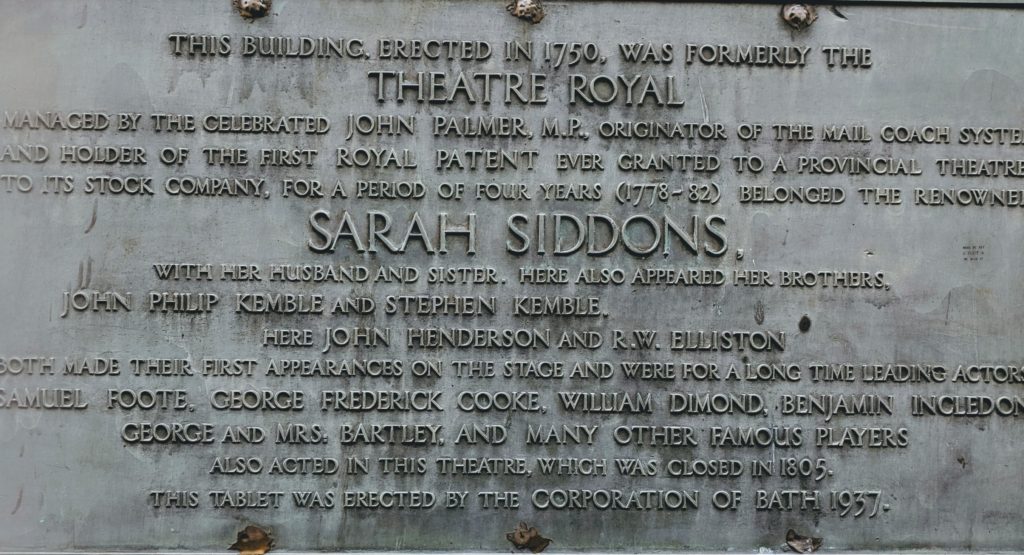“No one else is here,” he said. “Do you want to see the private rooms?”
Of course I did.
The official tour of the old Theatre Royal in Bath was at an end. The tour guide and I had spent a delightful hour and a half together already, since no one else showed up.
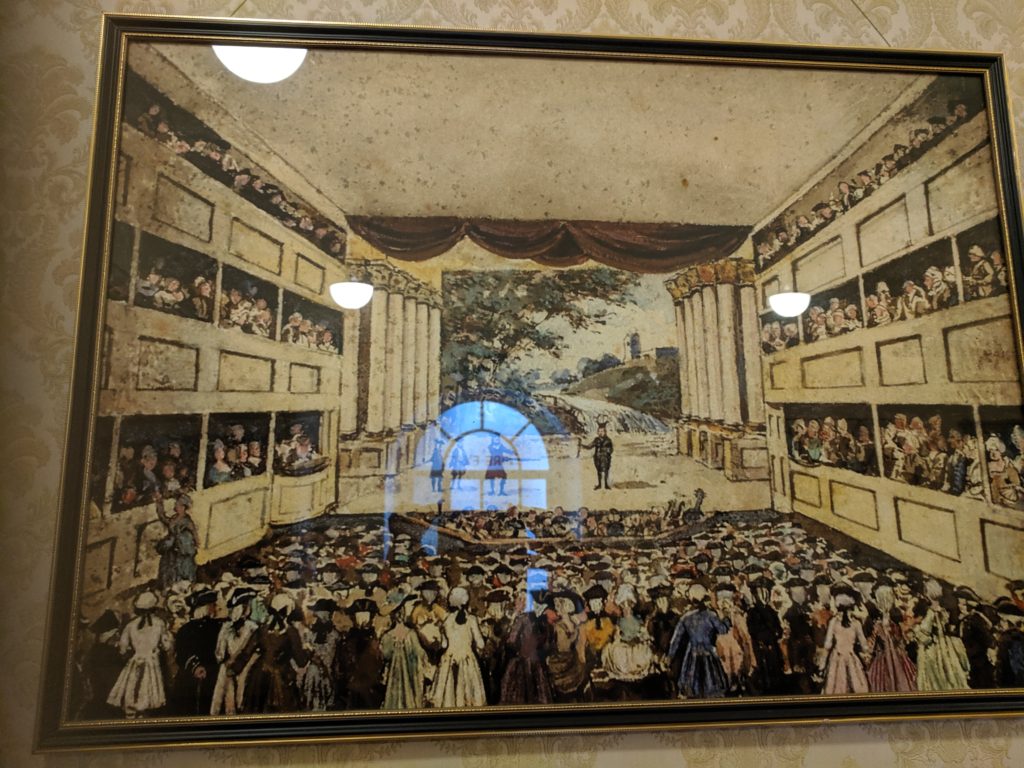
The Theatre Royal got its name because it got a royal seal–it was the first theatre to do so outside of London, which legitimized it. It opened in 1750 and had to undergo a lot of renovations–there just weren’t enough seats to fill the demand, especially when a young actress called Sarah Siddons took the stage.
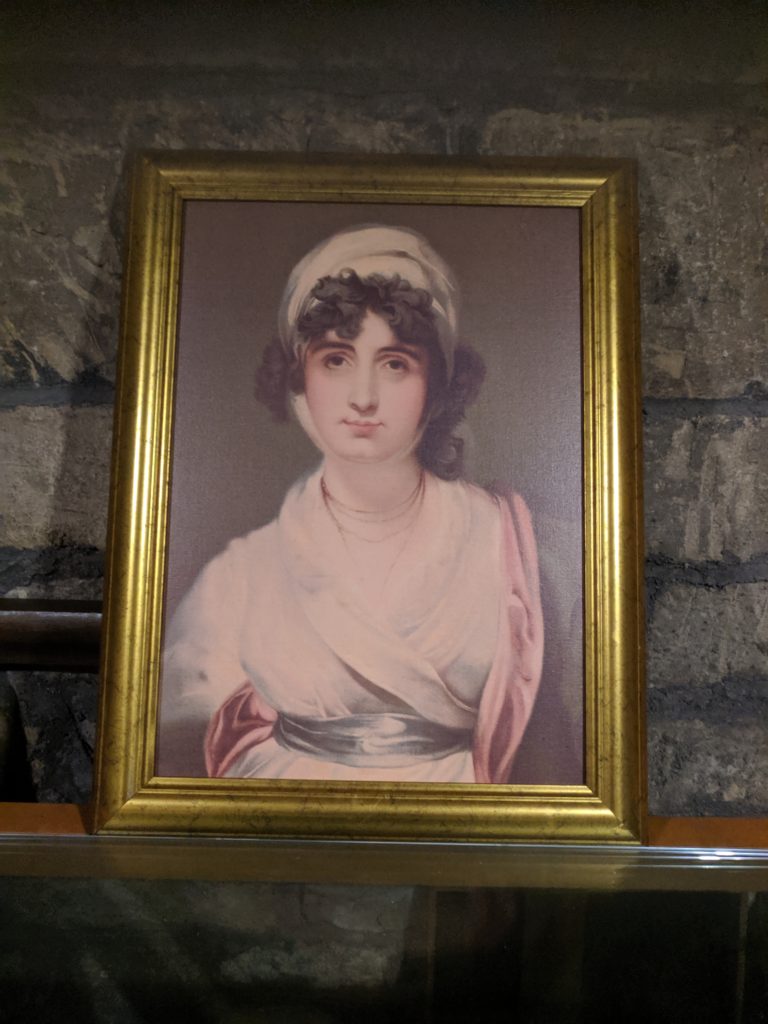
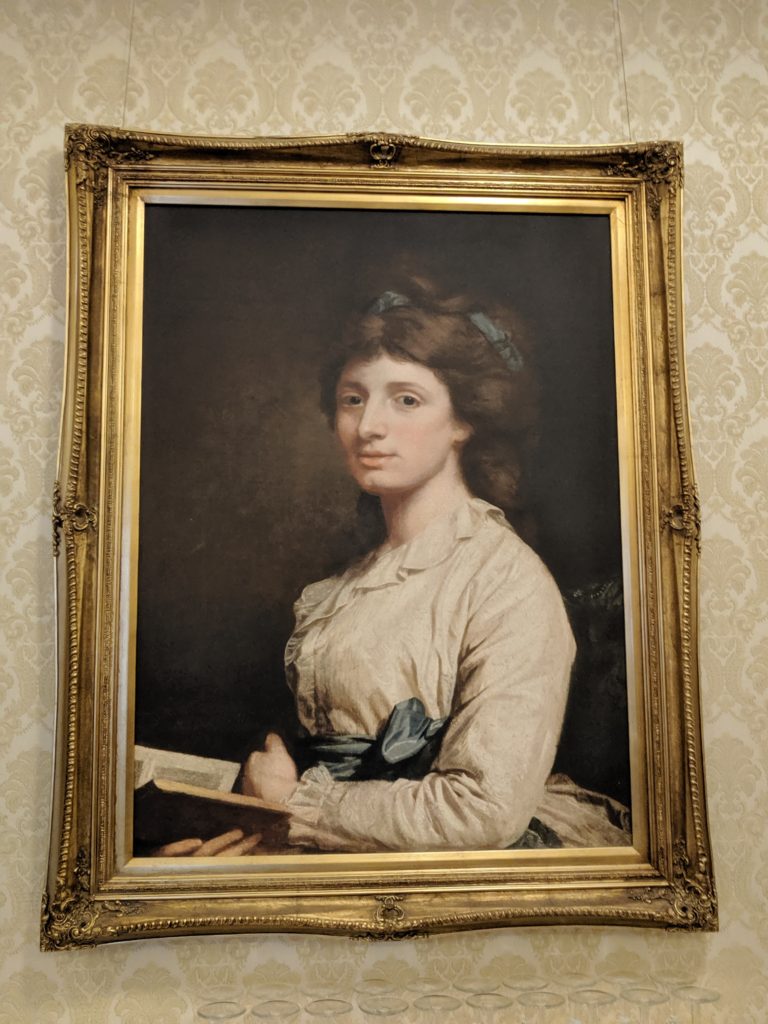
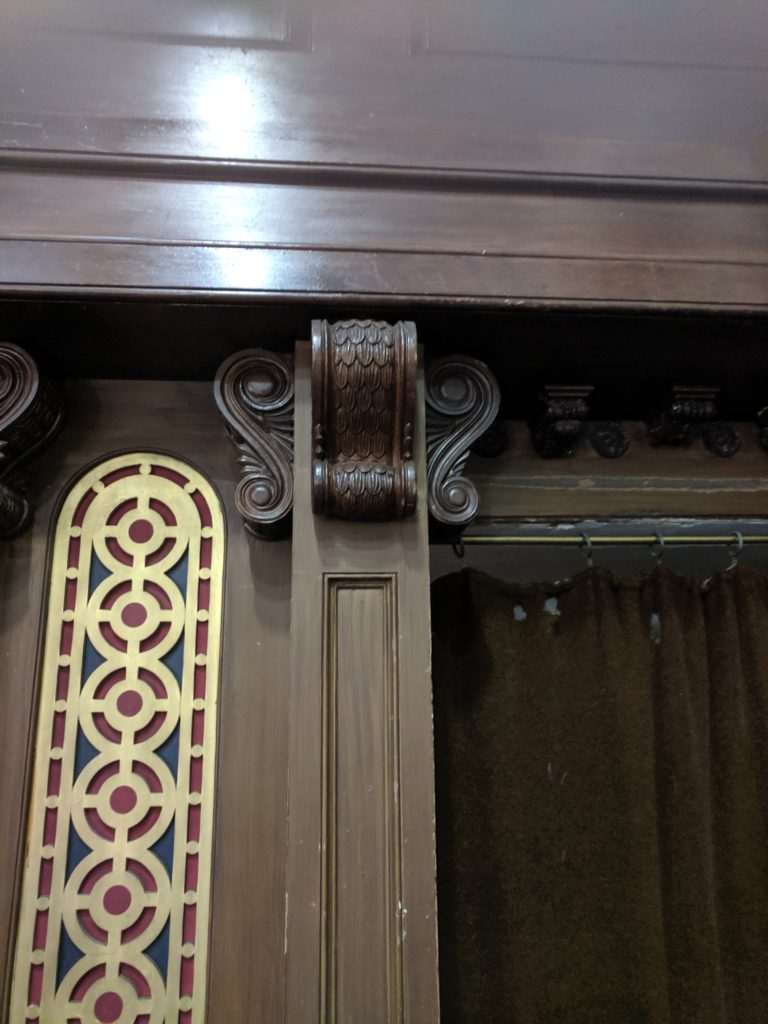
The theatre closed in 1805, but the building became a Catholic Chapel in 1809 (to 1863). Catholics in Protestant England at this time were not allowed to be buried in consecrated public ground, so they were buried in the basement.
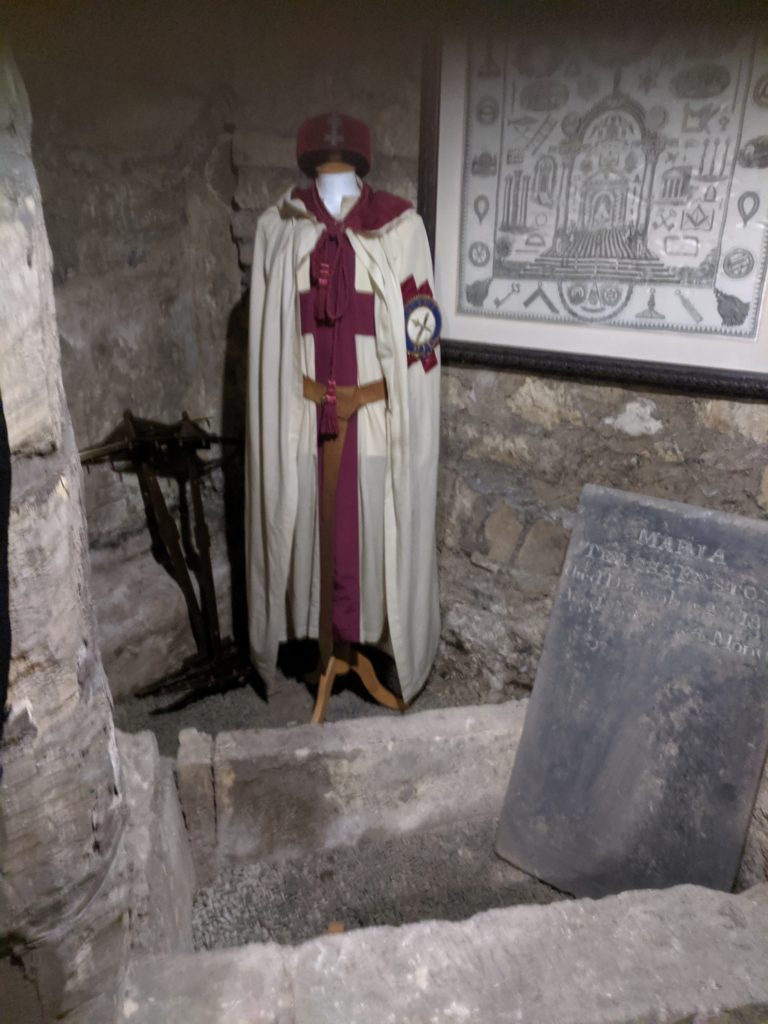
The spirit of the theatre held, though, since one of the priests was a famous orator; non-Catholics would attend his homilies just to hear him.
In 1865, the Masons made the building their home in Bath. Unfortunately, after WWII bombing damaged the building, the city wanted to demolish it. The Masons raised enough money from within to save the building themselves.
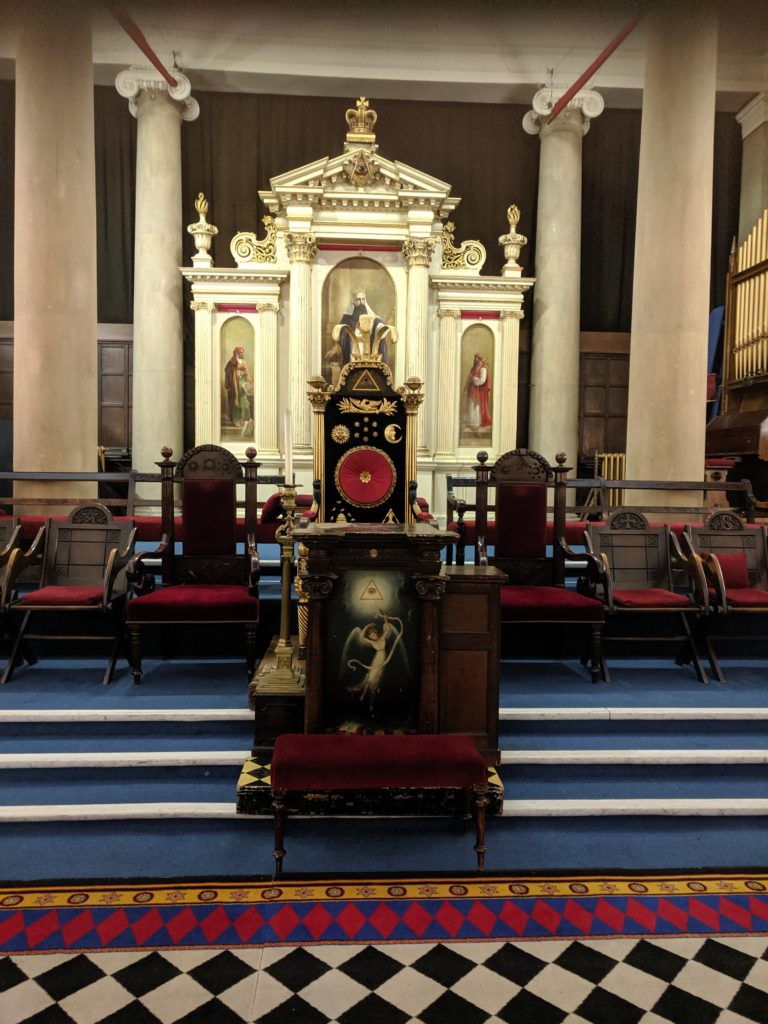
I hadn’t known much about Masons before taking this tour. I mean, I’d seen the Stonecutter episode of The Simpsons, but that’s about it.
Luckily, my lovely guide was a Mason. He explained that the reputation for secrecy came from Masons in long-ago centuries always being in danger of being kidnapped. Were you a rich man who wanted a castle or a wall but you didn’t have a Mason? Apparently the answer was to steal one. Thus, the secret meetings and handshakes were to keep themselves safe.
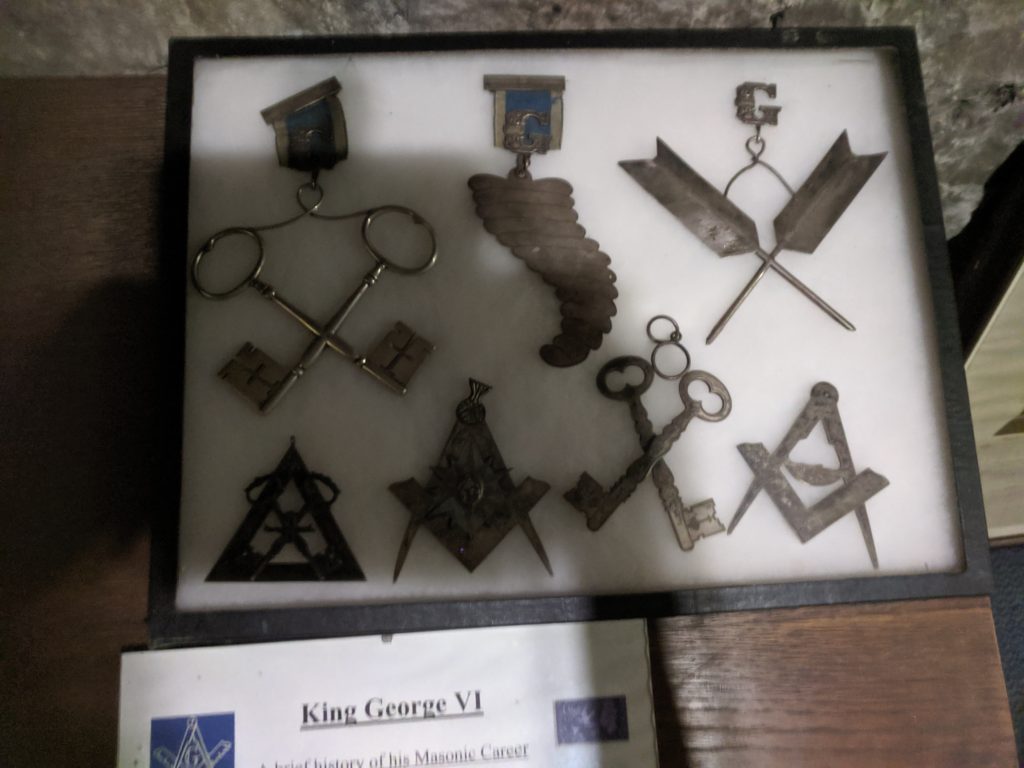
Today, the Masons are largely a philanthropic organization.
I learned The Knights Templar are an arm of the Masons.
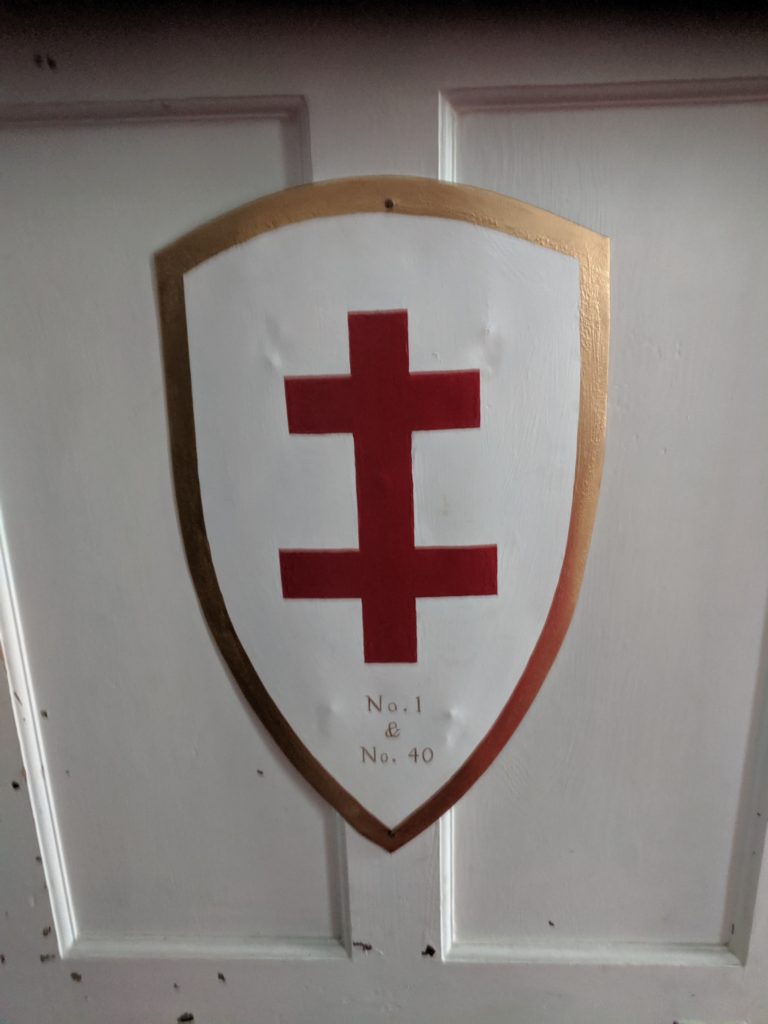
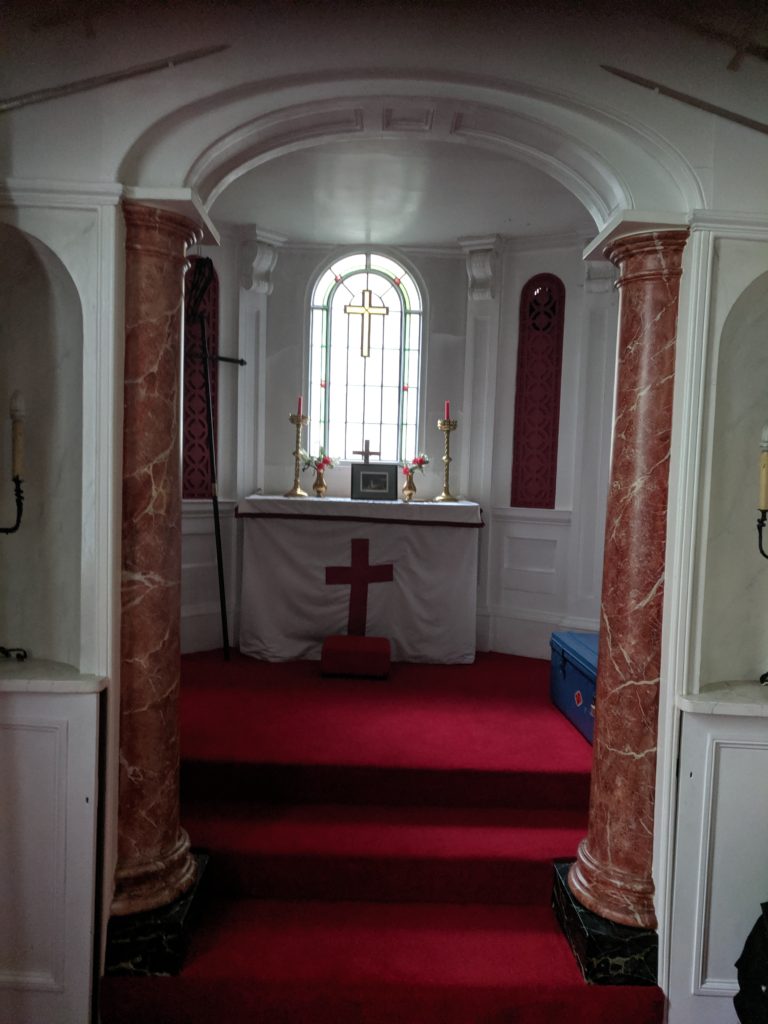
Besides getting to be in a Templar prayer room, the Masons’ private meeting room, and the basement of artifacts and old tombs, I was also shown a part of the building that has not been excavated or restored–it’s part of the basement too damaged from the bombings. There are certainly some ancient Catholic bodies there.
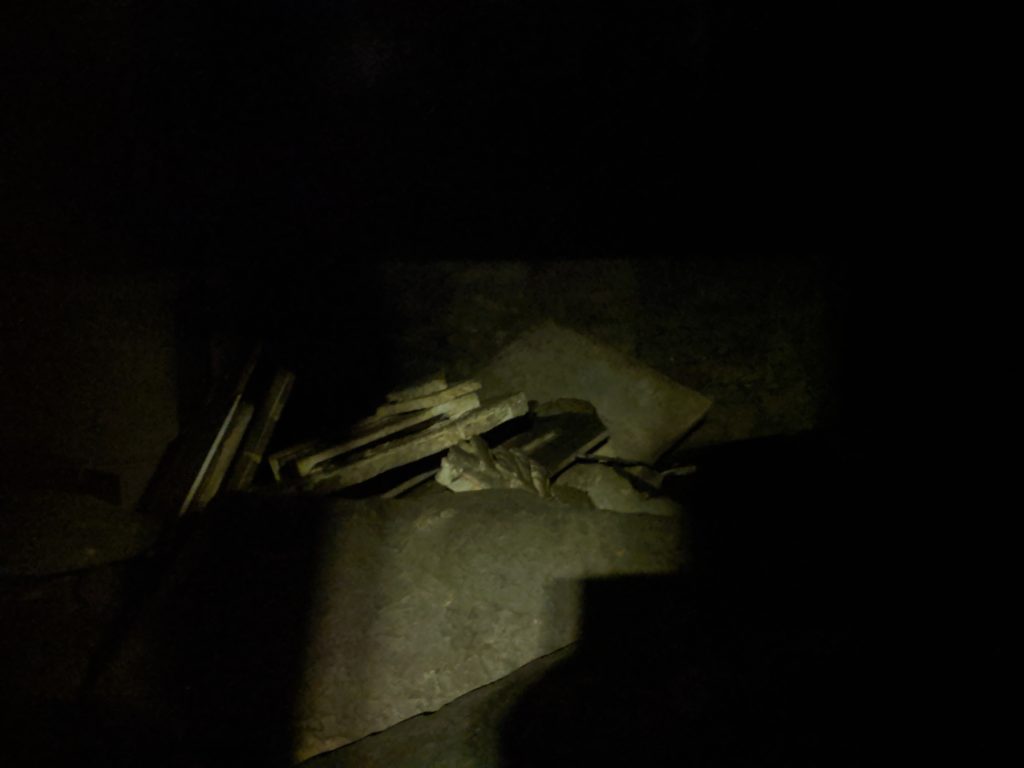
I am so thankful that the Masons have kept this building and its history alive.
And I’m even more thankful that no one else showed up for the tour.
